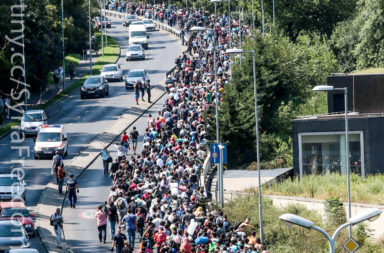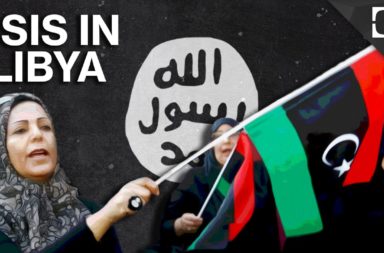The humanitarian crisis challenging Mediterranean states in Europe, North Africa and the Middle East has continued to deteriorate, with reports pointing to a higher fatality rate for refugees attempting the dangerous crossing.
- Likelihood of drowning increases on ‘most dangerous’ route across the Mediterranean.
- Widespread exploitation and abuse of thousands of refugees in Libya as possible routes to Europe close.
- 1 refugee dies for every 50 who make the crossing compared to last year when 1 person died for every 90 who safely reached Europe.
For every 50 refugees that attempt the difficult sea crossing of the Central Mediterranean, 1 will die.
This is the frightening statistic reported by the International Organization for Migration (IOM), who contend that refugees and migrants are dying in the Mediterranean at a quicker rate than 2017.
Highlighting the worsening situation in Libya, now the main country of departure for those escaping brutal, war-torn and insecure homes, and horrendous conditions in refugee camps, the watchdog has called on European leaders to face up to the grim reality of new statistics.
“The rate of deaths for migrants attempting to cross the Mediterranean was almost twice as high in 2017 than in 2016,” the IOM stated.
“Despite considerable policy and media attention and increased search and rescue efforts by a range of actors, the death toll in the Mediterranean has continued to rise … The rate of death increased from 1.2 percent in the first half of 2016, to 2.1 percent in the first half of 2017.
“Although fewer migrants crossed the Mediterranean in 2017, a higher percentage of those on this journey perished.”
The “Most Dangerous Route” for Refugees
The Central Mediterranean route is the most popular refugee route for refugees to Malta or Italy.
Since 2013 the crossing has claimed the lives of at least 15,000 mostly African, Moroccan or Bangladeshi refugees and accounts for more than half of the 22,500 refugees and migrants who have perished.
“Part of this rise [in the death rate] is due to the greater proportion of migrants now taking the most dangerous route – that across the Central Mediterranean,” the IOM report added, as 2 events tempered the flow of refugees migrating from Turkey and Greece.
Several countries have closed the Balkan route which previously allowed refugees to travel by land from Greece while the EU-Turkey deal has additionally closed the Aegean route to Europe.
A Worsening Situation for Refugees in Libya
Rights groups such as Amnesty International and Human Rights Watch have documented widespread abuse of thousands of refugees in Libya who are often exploited and forced to travel without money, food or water or else reside in ramshackle detention centers.
“Reducing the numbers of boats setting off from Libyan shores does not solve the issue, it simply pushes it back into Libya, and into the detention centres,” Marcella Kraay, a Doctors Without Borders coordinator told news organisation Al Jazeera.
“Nearly all people MSF search and rescue teams save from drowning on the Mediterranean have been exposed to an alarming level of violence and exploitation while in Libya: kidnap for ransom, forced labour, sexual violence and enforced prostitution, being kept in captivity or detained arbitrarily.”
“The EU needs to shift its strategy to put the security of refugees and migrants first,” said Kraay. “The EU member states should shift their focus from fighting symptoms and stopping people to finding solutions and assisting people … Injecting money without transparency, monitoring and accountability risks fuelling the detention business and the abuses.”
“A Full Blown Offensive on Refugees”
“In the Mediterranean, we currently witness a full-blown offensive against migrants and civil search and rescue actors, in which EU institutions and member states work hand-in-hand with their authoritarian allies in Libya to shut down the Central Mediterranean migration route,” said a spokesman from Alarmphone, a collective of activist and migrant groups providing 24 hour help for refugees in distress at sea.
President of the European Commission Jean-Claude Juncker appeared to revel in lower arrival numbers, using his State of the Union speech to the European Parliament to claim “We have drastically reduced the loss of life in the Mediterranean.”
However the statesman did also use the platform to call on Europe to “urgently improve migrants’ living conditions in Libya”, while acknowledging the “inhumane” conditions at detention centers there.
“Fewer departures from Libya mean more people in abusive situations in Libya itself,” Judith Sunderland, associate director for Europe at Human Rights Watch stated, adding “currently, there is no reason whatsoever for celebration. The root causes for migration and flight have not changed.”
A Political Backlash
These latest figures will do little to quell the fears and uncertainties in Europe ahead of a series of meaningful elections that have often been defined by attitudes to the European response to the refugee crisis.
Many are concerned that a political hardening to the plight of those making the journey to Europe will continue to lead to a further loss of life and a hard-line response as a result of right-wing backlash against some of the world’s most vulnerable people.




